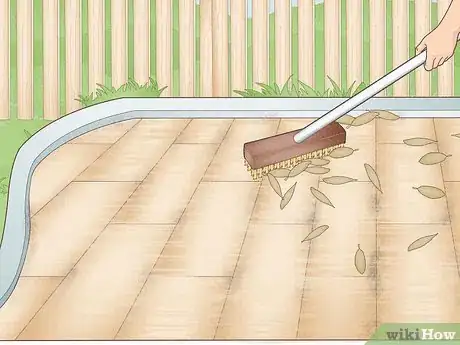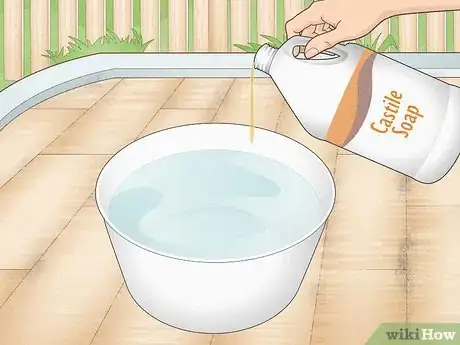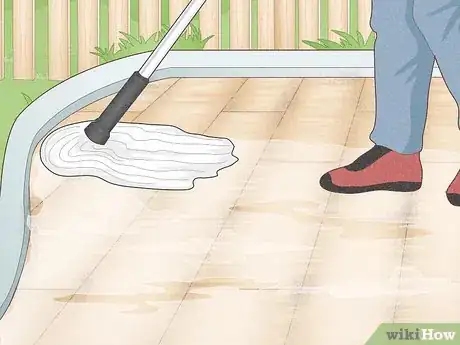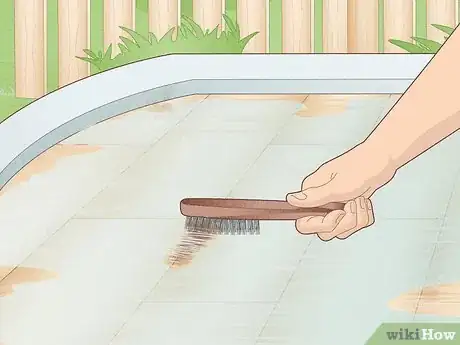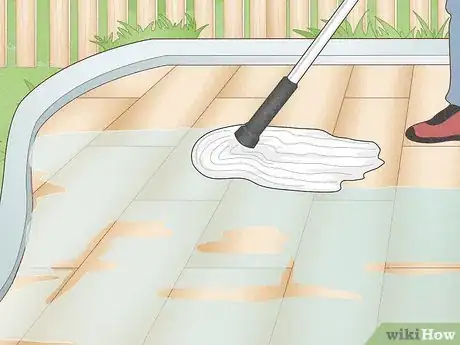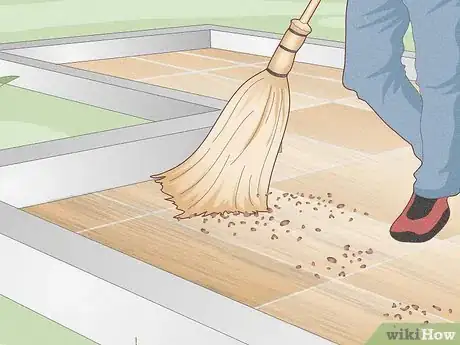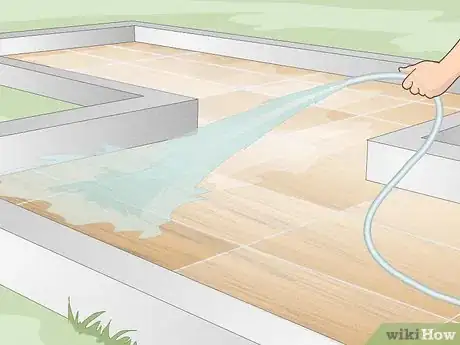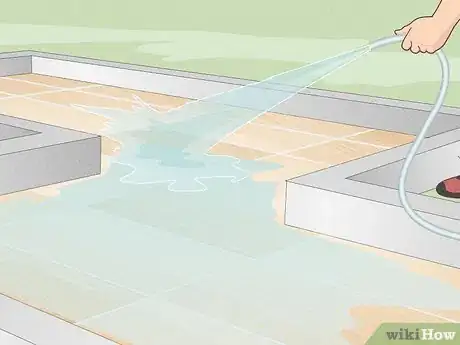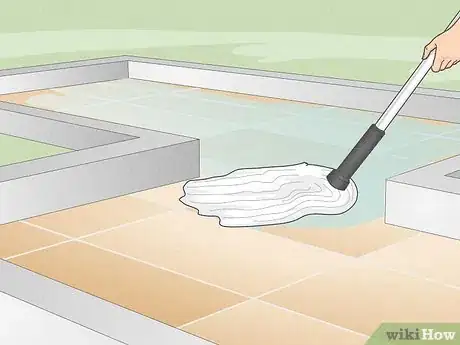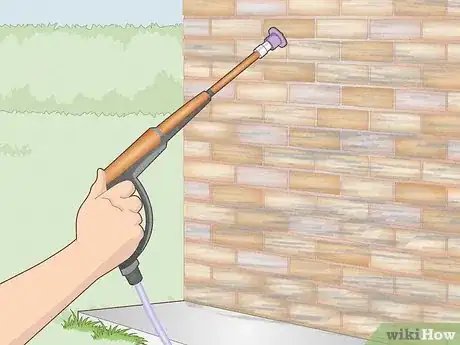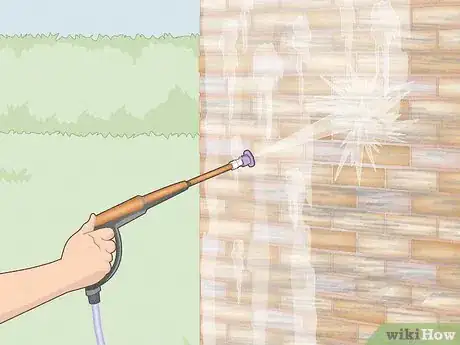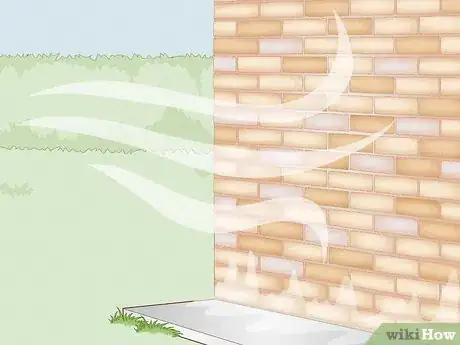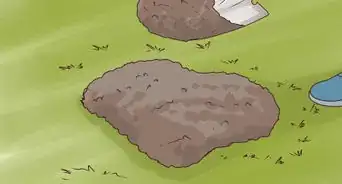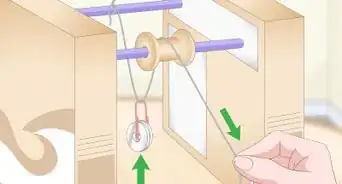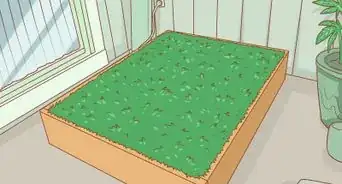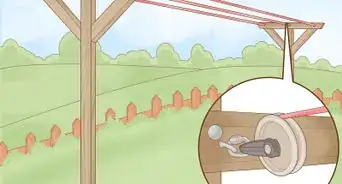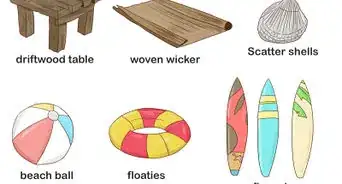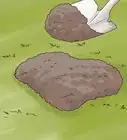This article was co-authored by Melissa & Michael Gabso and by wikiHow staff writer, Nihal Shetty. Melissa and Michael Gabso are the Owners of MC Construction & Decks based in Los Angeles, California. With over ten years of experience, they specialize in exterior and interior remodeling and redesign, including kitchen, bathroom, and deck construction. MC Construction & Decks also provides plans and permitting services and is known for backyard beautification projects. MG Construction & Decks has been rated as one of the top contractors in the Los Angeles area year after year.
There are 9 references cited in this article, which can be found at the bottom of the page.
This article has been viewed 13,348 times.
With its bright, natural look, limestone is a beautiful addition to any outdoor landscape. However, over time, and especially with exposure to outdoor conditions, it can become discolored and dirty. Fortunately, there are a number of ways to restore limestone to its former look. A quick, surface cleaning for limestone floors and stairs is a simple process that will add a glow to your outdoor space. To get the same results for limestone that’s been heavily stained over a long period, deep cleaning will be necessary. We’ll cover both techniques here, as well as how to clean exterior limestone walls, so read on!
Steps
Quick Clean for Limestone Floors
-
1Sweep the floor thoroughly. Try to remove as much dirt as you can from the floor surface. It’s possible that some stains and grime will need to be revisited later, but make sure that any soil, leaves, or grass are cleared from your floor.[1]
-
2Prepare a cleaning solution of warm water and Castile soap. You can use 1 gallon (3.8 L) of warm water to 1 tablespoon (15 mL) of Castile soap for a simple, mild detergent. Alternatively, you can also buy a detergent specifically meant to clean limestone.[2]
- Most exterior limestone will have a honed finish, for which using a mild soap is the best option for regular cleaning. But if you have polished limestone outdoors, use a pH-neutral detergent, such as a mild dish soap, in place of the castile soap.[3]
- Make sure not to apply any acidic cleaners to the limestone! Limestone can easily become damaged when exposed to acidic solutions. Keep cleaning agents like vinegar or lemon juice away from your floors.[4]
- If you’re using a store-bought detergent for limestone, follow the instructions on the product. Different products require different amounts of water, and you should stick to the product guidelines in order to avoid harming your limestone.
Advertisement -
3Wash the limestone floor. Soak a wet mop in a bucket of the cleaning solution, then ring it out to get rid of excess water. Mop the floor in sections, wetting the mop it in the cleaning solution when it dries. Try not to step in the areas you already mopped with dirty shoes, and be sure to wash all of the floor thoroughly, including the crevices of the limestone![5]
-
4Grab a brush for tough stains. A wire brush, along with the warm cleaning solution, can scrub out tougher spots of grime and grease. You can also use an old toothbrush to clean out any hard-to-reach areas.[6]
-
5Rinse your floor with water, and go over it with a dry mop. Soak up as much of the soap as you can. If too much of the soap dries on the limestone, it can cause streaks. Drying the floor will also prevent watermarks, so it's an important step here.[7]
Deep-Cleaning Limestone Floors
-
1Sweep the floor. You’ll want to make sure that there is as little dirt as possible on the surface of the limestone before you start deep cleaning it![8]
- Make sure that you remove any bird excrement before deep cleaning! If it’s exposed to a heavy cleaning solution, it can permanently stain your limestone.[9]
-
2
-
3Apply an alkaline cleaner to the surface. A strong alkaline cleaner can get rid of tough stains, and should be purchasable at your local home supply store. Working in sections, use a soft-bristled brush to spread the cleaner onto the limestone. A thin application of the cleaner should be enough, but make sure you reach every part of the limestone. Leave the alkaline cleaner on the limestone for 5-10 minutes.[12]
- An alkaline cleaner can work especially well to remove berry and other stains that get on exterior limestone. Alkaline cleaners break down fatty, greasy, and oily deposits, and are far safer for limestone than acidic cleaners.[13]
- Different alkaline cleaners may require different amounts of time on the limestone surface. Follow the product’s instructions for the best results.[14]
-
4Rinse the floor with water. Once again, you can either use a power washer set to a pressure of about 1000 psi, or a standard garden hose for this process.[15]
- If you have plants near your limestone floor, try not to get too much of the cleaning solution on them. Depending on how hardy your plants are, they could be harmed by the strength of the alkaline cleaner. If you’re worried about their safety, you can set up a plastic tarp on the edge of your limestone to stop any water from entering the soil.[16]
-
5Dry the surface. Use a dry mop to soak up as much water as possible. Doing so will prevent watermarks from appearing on your newly cleaned limestone.[17]
Cleaning Limestone Walls
-
1Dust off any dirt that you can reach. You can use a brush or a broom for this. Sweep from top to bottom, letting any dirt fall to the ground. If you’re feeling especially eager to make sure your wall is as clean as possible, grab a ladder![18]
-
2Get a power washer. Unfortunately, a garden hose will likely not be enough to thoroughly clean a stained limestone wall. If you don’t already own a power washer, and can’t find one to borrow, many home supply stores will allow you to rent one for the day. Call or e-mail your local store to check the availability of their power washers.[19]
-
3Power wash the wall. You should set the power washer to approximately 1000 psi, and use a store-bought limestone cleaner and brightener as a detergent. Most power washers have a special compartment to add detergent, where you can pour in the detergent. Wash the entire wall thoroughly, working in sections from top to bottom, and focus especially on grimier areas of the wall. By working in sections, you can make sure each area of the wall is sufficiently cleaned before moving on to the next area.[20]
- Be sure not to set the pressure too high. Anything about 1200 psi could damage your wall.[21]
- Depending on the kind of detergent you buy, the amount you should add to your power washer will differ. Consult the product guidelines for more information. If you're renting your power washer, ask beforehand whether the model allows for detergent to be added. Different power washers have different capacities for detergent, so you may need to refill it while washing.
-
4Let the wall dry. As the wall dries, it should be brighter and cleaner, thanks to the detergent. Enjoy your newly refreshed limestone!
References
- ↑ https://homesteady.com/facts-7967309-way-clean-limestone-steps.html
- ↑ https://wfca.org/page/stone-flooring
- ↑ https://www.naturalstoneinstitute.org/default/assets/File/stone-professionals/commercial_care_clean.pdf
- ↑ http://www.europeancleaningjournal.com/magazine/articles/latest-news/care-of-hard-floors-hard-work
- ↑ https://wfca.org/page/stone-flooring
- ↑ https://patio.tilecleaning.co.uk/deep-cleaning-a-heavily-soiled-limestone-patio/
- ↑ https://wfca.org/page/stone-flooring
- ↑ https://www.gsa.gov/technical-procedures/general-cleaning-exterior-limestone?Form_Load=88347
- ↑ https://www.gsa.gov/technical-procedures/general-cleaning-exterior-limestone?Form_Load=88347
- ↑ https://www.gsa.gov/technical-procedures/general-cleaning-exterior-limestone?Form_Load=88347
- ↑ https://www.gsa.gov/technical-procedures/general-cleaning-exterior-limestone?Form_Load=88347
- ↑ https://www.gsa.gov/technical-procedures/general-cleaning-exterior-limestone?Form_Load=88347
- ↑ https://www.pfonline.com/articles/alkaline-cleaning-guide
- ↑ https://patio.tilecleaning.co.uk/deep-cleaning-a-heavily-soiled-limestone-patio/
- ↑ https://patio.tilecleaning.co.uk/deep-cleaning-a-heavily-soiled-limestone-patio/
- ↑ https://www.gsa.gov/technical-procedures/general-cleaning-exterior-limestone?Form_Load=88347
- ↑ https://www.gsa.gov/technical-procedures/general-cleaning-exterior-limestone?Form_Load=88347
- ↑ https://www.gsa.gov/technical-procedures/general-cleaning-exterior-limestone?Form_Load=88347
- ↑ https://www.consumerreports.org/pressure-washers/buy-or-rent-a-pressure-washer-a5260290987/
- ↑ https://cdn.ymaws.com/www.icri.org/resource/resmgr/crb/2002septoct/CRBSeptOct02_Mitnick.pdf
- ↑ https://wfca.org/page/stone-flooring
